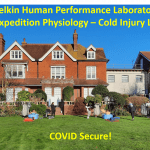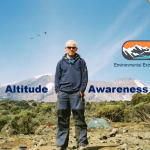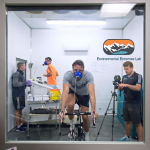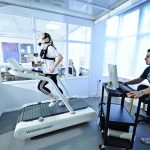The Sport and Exercise Science Consultancy Unit (SESCU) and Para-Monte have recently supported six members of staff from British Airways prior to their climb of Jebel Toubkal (4167m) in Morocco for Comic Relief.
They visited the lab and performed an Altitude Screening Test in the hypoxic chamber, which is able to simulate the effects of high altitude through reducing the oxygen levels compared to sea level.
The chamber was set at 3000m whilst they walked at 5km/hr and at a 10% incline, with various measures being taken throughout. This included the Lake Louise Questionnaire which assesses the presence and severity of Acute Mountain Sickness (AMS) through an individual’s self-reported score on five symptoms: headache, gastrointestinal symptoms, fatigue and/or weakness, dizziness/light-headedness and difficulty sleeping. The LLQ scores showed that four of the individuals were at low risk of AMS, however one was at moderate risk and one was at high risk.
Oxygen Saturation was also measured which is the percentage of oxygen in the blood that has bound with haemaglobin. Oxygen saturation declines with altitude as the atmospheric pressure deceases, however the rate varies considerably between individuals. Comparing the oxygen saturation drop to previous data indicated that five members of the group were at low risk of AMS and one was at moderate risk.
SESCU and Para-Monte also provided the team with equipment to use on their trek to assess their physiological responses to altitude and their risk of AMS. They found that those who presented the highest risk of AMS in the Altitude Screening Test also presented the highest risk on the trek.
The whole team managed to reach the summit safely and no-one reported any severe problems, nor required medical support. They believed the information they had received during the screening had implanted the self-awareness to slow down, break, take on fuel and water and slowly ascend.
“The information provided by the University of Brighton certainly helped us prepare for the challenge, and made us aware of the signs and symptoms of altitude illness”






































Leave a Reply